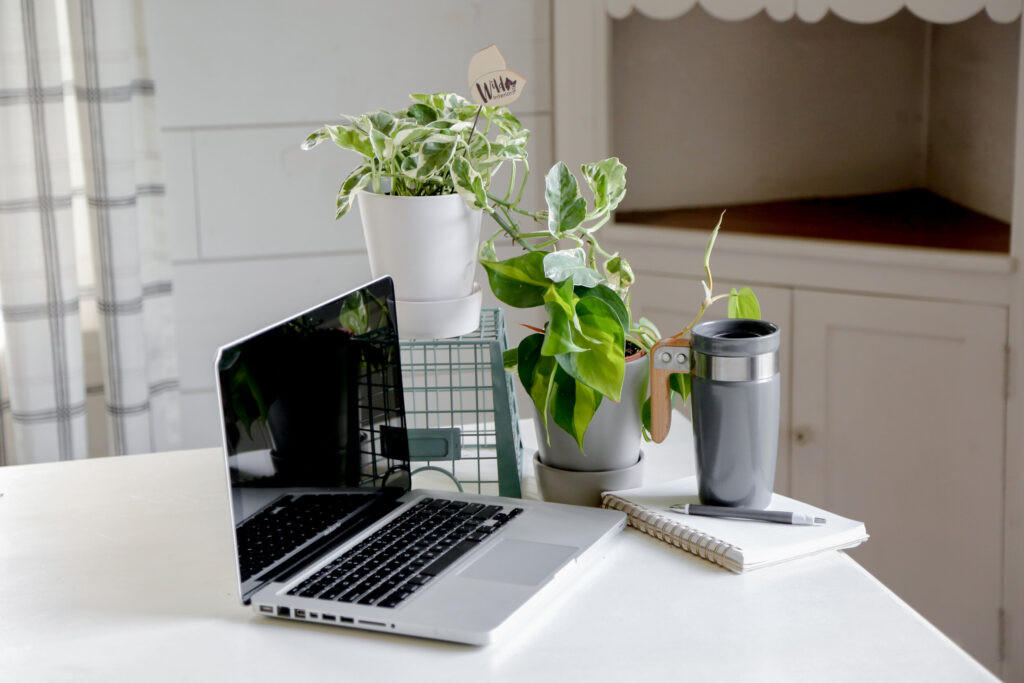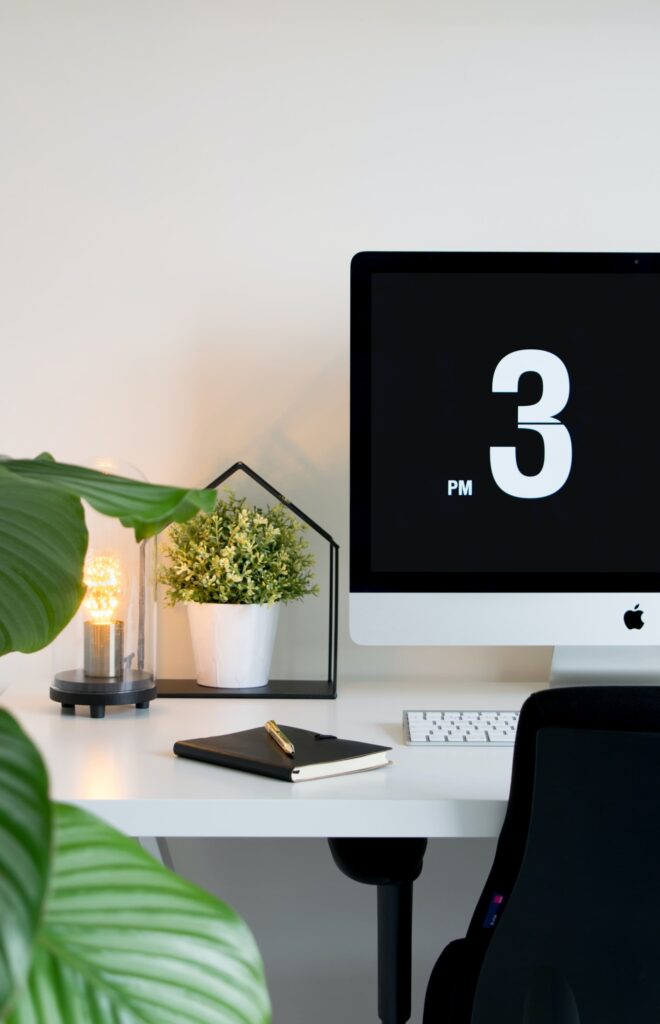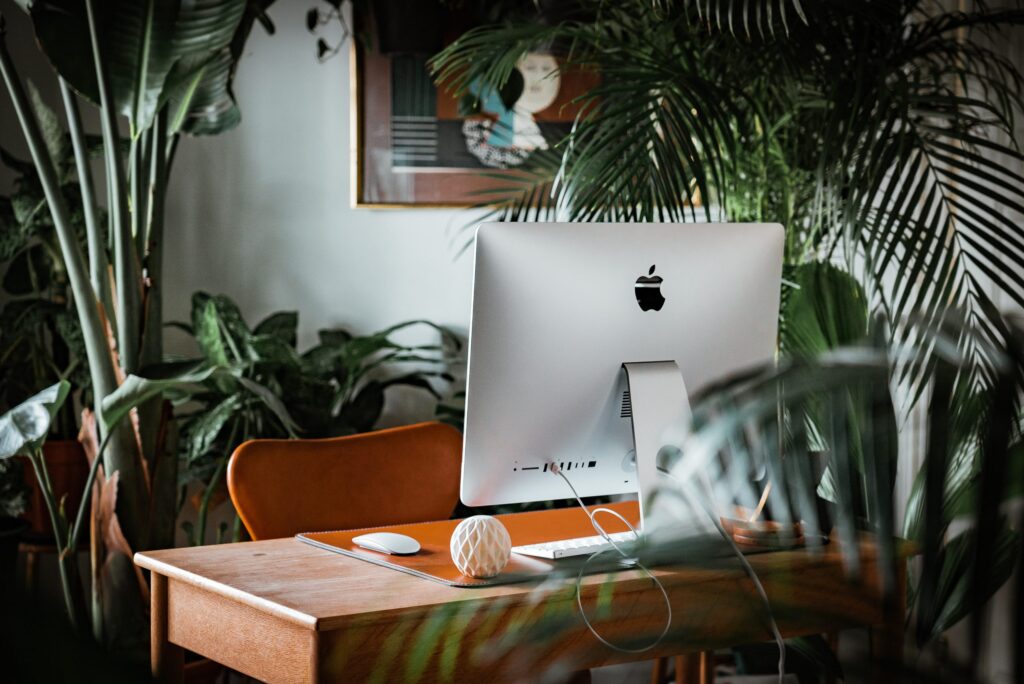
In this article, you’ll learn about the significance of plants in a minimalist office setup. We’ll explore how plants can enhance the aesthetics of your workspace and create a calming atmosphere. Additionally, we’ll discuss the benefits of having plants in terms of air purification, increased productivity, and overall well-being. By the end of this article, you’ll understand why incorporating plants into your minimalist office setup can be a game-changer. Plants play a crucial role in creating a harmonious and productive environment in a minimalist office. While minimalism often focuses on clean lines, simplicity, and neutral colors, incorporating plants into this design philosophy can bring numerous benefits. From increased productivity and improved air quality to reduced stress and enhanced focus, plants have the power to transform a minimalist office into a thriving and vibrant workspace. In this article, we will explore the various benefits of having plants in a minimalist office setup, discuss the process of choosing the right plants, provide tips for plant care and maintenance, and offer insights on incorporating plants into different work areas.
Increased productivity
One of the most significant benefits of having plants in a minimalist office is their ability to increase productivity. Research has shown that being surrounded by plants can enhance creativity, boost concentration, and improve overall job satisfaction. The presence of plants in an office can help create a calm and peaceful atmosphere that encourages focus and minimizes distractions. Additionally, the visual appeal of lush greenery can have a positive impact on mood and motivation, leading to increased productivity and efficiency in the workplace.
Improved air quality
Indoor air quality can have a significant impact on the health and well-being of office occupants. In a minimalist office setup, where natural elements are typically limited, plants can serve as natural air purifiers, filtering out harmful toxins and releasing oxygen into the environment. By absorbing carbon dioxide and volatile organic compounds (VOCs), plants contribute to cleaner and fresher indoor air. Improved air quality can result in reduced instances of respiratory issues, allergies, and other health concerns, ultimately promoting a healthier and more comfortable office environment.
Reduced stress and anxiety
The fast-paced nature of the modern workplace often leads to stress and anxiety among employees. However, the presence of plants can help alleviate these negative emotions and promote a sense of calm and tranquility. Studies have shown that exposure to nature, even in the form of indoor plants, can reduce stress levels and improve overall well-being. By creating a soothing and refreshing environment, plants in a minimalist office setup can enhance employee morale, reduce tension, and contribute to a more relaxed and positive work atmosphere.
Enhanced focus and concentration
In a minimalist office, where distractions are minimized and the focus is on essential tasks, plants can serve as natural aids in maintaining focus and concentration. The presence of greenery has been shown to improve attention span and cognitive performance. By providing a visually stimulating and pleasing environment, plants can help prevent mental fatigue and increase productivity. The calming effects of plants can also help employees feel more grounded and centered, allowing them to perform their tasks with greater clarity and efficiency.

Choosing the right plants for a minimalist office
When selecting plants for a minimalist office setup, several factors need to be considered. The chosen plants should be low-maintenance, aesthetically appealing, and capable of thriving in indoor conditions. Here are some key considerations for choosing the right plants:
Low-maintenance plants
In a minimalist office, where simplicity and efficiency are key, low-maintenance plants are ideal. Opt for plants that require minimal watering, can tolerate low light conditions, and do not need frequent pruning or fertilization. Succulents, such as aloe vera and snake plant, are excellent choices as they are resilient, require little water, and add a touch of greenery to the workspace.
Aesthetic appeal
While the primary focus of a minimalist office is on functionality and simplicity, incorporating plants with aesthetic appeal can add beauty and visual interest to the space. Choose plants with interesting foliage, unique textures, or vibrant colors that complement the office decor. Some options include the pothos plant, with its cascading vines, or the peace lily, known for its elegant white flowers.
Ability to thrive in indoor conditions
Indoor environments often have lower light levels and controlled temperature and humidity, making it essential to select plants that can adapt to these conditions. Look for plants that are known for their ability to thrive indoors, such as the spider plant or the ZZ plant. These plants are well-suited for minimalistic office setups as they can tolerate a wide range of lighting conditions and do not require constant monitoring.
Optimal placement of plants in a minimalist office
Where and how plants are placed in a minimalist office can significantly impact their effectiveness in enhancing the workspace. Here are some tips for optimal placement:
Strategic positioning for maximum impact
Consider placing plants in strategic areas of the office where they can have the most impact. This could be near workstations or areas where employees spend the most time. Placing plants near windows can also provide natural light and create a connection to the outdoors. By strategically positioning plants, you can maximize their visual and therapeutic benefits.
Integration with minimalist decor
In a minimalist office, it’s essential to integrate plants seamlessly with the overall decor. Choose planters and containers that align with the minimalist aesthetic, such as sleek and minimalistic designs. Opt for neutral colors or monochromatic tones to maintain a cohesive and harmonious look. By integrating plants into the design, they become an integral part of the overall office setup, rather than mere additions.
Creating visual interest
Plants can serve as focal points or create visual interest in a minimalist office. Use different sizes, shapes, and varieties of plants to add depth and dimension to the workspace. Consider placing tall plants in corners or using hanging planters to utilize vertical space. By creating visual interest, plants can contribute to a dynamic and engaging office environment.
Selecting the appropriate plant containers
The choice of plant containers in a minimalist office setup is crucial as it can impact the overall aesthetic and functionality of the space. Here are some considerations for selecting the appropriate plant containers:
Sleek and minimalistic designs
To maintain the minimalistic aesthetic, opt for plant containers with sleek and minimalistic designs. Choose clean lines, simple shapes, and neutral colors that blend seamlessly with the overall decor. Avoid containers with excessive ornamentation or distracting patterns that may disrupt the minimalistic atmosphere.
Choosing materials wisely
Consider the materials used for plant containers and their compatibility with the minimalist office setup. Materials such as concrete, ceramic, or matte-finished plastic can provide a contemporary look and feel while being durable and long-lasting. Natural materials like wood or stone can also add warmth and texture to the space.
Incorporating natural elements
In a minimalistic office, incorporating natural elements is essential for creating a balanced and harmonious environment. Choose plant containers that allow the natural beauty of plants to shine through. Transparent or glass containers can showcase the roots and soil, adding an organic touch to the overall design.
Tips for plant care and maintenance in a minimalist office
Proper care and maintenance of plants are key to their longevity and effectiveness in a minimalist office setup. Here are some essential tips for plant care:
Watering and fertilization
Ensure that plants are watered according to their specific needs. Avoid overwatering, as excessive moisture can lead to root rot and other plant diseases. Similarly, under-watering can cause wilting and leaf loss. Find a balance and water plants accordingly. Additionally, provide the necessary fertilization to keep plants healthy and thriving.
Pruning and trimming
Regular pruning and trimming help plants maintain their shape and promote healthy growth. Remove any dead or yellowing leaves to prevent the spread of diseases. Trim back overgrown branches or vines to keep plants compact and visually appealing. Pruning also helps rejuvenate plants and encourages new growth.
Monitoring for pests and diseases
Inspect plants regularly for signs of pests or diseases. Common pests in office settings include spider mites, mealybugs, and scale insects. Treat any infestations immediately to prevent the spread and save the plant. Regularly wiping plant leaves with a damp cloth can also help keep pests at bay.

Utilizing plants for effective space utilization
In a minimalist office, space utilization is a crucial aspect of the design. Here are some ways to use plants effectively to optimize space:
Vertical gardening
Vertical gardening is an excellent technique for utilizing vertical space in a minimalist office. Install wall-mounted planters or vertical plant stands to create a striking visual display while maximizing floor space. Hanging plants cascading down shelves or walls also add a touch of greenery without occupying valuable desktop or floor space.
Hanging planters
Hanging planters are an efficient way to incorporate plants into a minimalist office setup. Install ceiling hooks or use wall-mounted brackets to hang planters at different heights. This not only adds greenery to the space but also introduces visual interest and dimension, especially in areas with limited floor space.
Living walls
Living walls, also known as green walls, are vertical installations of plants that cover entire walls. They can transform a minimalist office into a lush and vibrant space while saving valuable floor space. Living walls can serve as focal points and create a calming and soothing atmosphere for employees.
Incorporating plants into different work areas
Different work areas within an office can benefit from the presence of plants. Here are some suggestions for incorporating plants effectively into various spaces:
Desk plants for personal productivity
Placing small plants on desks can enhance personal productivity and well-being. Compact plants like succulents or small potted herbs are ideal for this purpose. Desk plants can purify the air, improve mood, and provide a connection to nature, even in a minimalist office. They can also serve as visual reminders to take breaks or engage in mindful moments.
Plants in meeting rooms for improved communication
Meeting rooms are often spaces where important discussions and brainstorming sessions occur. Incorporating plants in these areas can create a calming and conducive atmosphere for effective communication and collaboration. Large potted plants or living walls can add a touch of greenery, revitalizing the space and encouraging creative thinking.
Plants in common areas for relaxation
Common areas in the office, such as lounges or break rooms, are spaces where employees unwind and rejuvenate. By introducing plants into these areas, you can create a relaxing and refreshing environment. Consider installing larger plants or creating green corners that provide employees with a natural retreat from their workstations.

Case studies: Successful minimalist office setups with plants
Several companies and organizations have successfully implemented minimalist office setups with plants. Here are a few notable case studies:
Company X achieves higher creativity and innovation
Company X, a design firm, incorporated plants into its minimalist office setup to foster creativity and innovation. By strategically placing plants near workstations and meeting rooms, along with vertical gardens in common areas, the company created an environment that promoted fresh thinking and design inspiration. Employees reported increased job satisfaction and higher levels of creativity, resulting in innovative solutions for clients.
Organization Y experiences decreased employee sick leave
Organization Y, a healthcare facility, introduced plants into its minimalist office setup as part of its wellness program. By incorporating plants that improve air quality and reduce stress, the organization aimed to enhance employee well-being and decrease sick leave. The presence of plants contributed to a healthier and more energizing workspace, resulting in fewer instances of respiratory issues and improved overall employee health.
Start-up Z enhances employee well-being and satisfaction
Start-up Z, a technology company, prioritized employee well-being by incorporating plants into its minimalist office design. By creating a green workspace with a variety of plant species, the company aimed to reduce stress and create a positive and appealing work environment. The presence of plants in both personal workstations and common areas led to increased employee satisfaction, improved job performance, and a stronger sense of community within the company.
Overcoming challenges of plant care in a minimalist office
While plants offer numerous benefits in a minimalist office setup, there can be challenges associated with their care and maintenance. Here are some strategies for overcoming these challenges:
Establishing a watering and maintenance routine
In a busy office environment, it can be easy to overlook plant care. Establish a watering and maintenance routine to ensure that plants receive the necessary care on a regular basis. Set reminders or designate specific individuals responsible for plant care. By incorporating plant care into the office routine, you can prevent neglect and promote the health and well-being of the plants.
Educating employees about plant care
Educating employees about plant care is essential in maintaining a healthy and thriving office environment. Provide information and resources on how to care for plants, including watering schedules, pruning techniques, and signs of common plant diseases. Regularly remind employees about the importance of plant care and encourage them to take an active role in maintaining the greenery within the office.
Addressing allergies and sensitivities
While plants offer numerous benefits, it is important to consider the allergies and sensitivities of employees. Avoid plants known to trigger allergies, such as pollen-producing plants, and opt for low-allergenic plants. Ensure proper ventilation in the office to minimize potential allergens. If necessary, consult with employees and provide alternatives or accommodations for those with severe allergies or sensitivities.

Conclusion
In conclusion, plants play a crucial role in a minimalist office setup by enhancing productivity, air quality, and overall well-being. When carefully selected, placed, and maintained, plants can transform a minimalist workspace into a thriving and vibrant environment. The benefits of plants in a minimalist office extend beyond aesthetic appeal, with increased productivity, improved air quality, reduced stress, and enhanced focus being just a few of the positive outcomes. By integrating plants into different work areas and overcoming the challenges associated with their care, a minimalist office can create a healthy, inspiring, and inviting space for employees to thrive.
